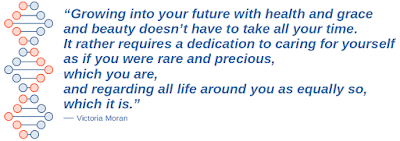Previous posts explored balance and hip flexibility. This post explores core strength.
TESTING YOUR CORE STRENGTH 2
The Plank Test, also known as the Prone Bridge Test, is a simple fitness test of core muscle strength. The aim of this test is to hold Plank Pose for as long as possible.
Start with the upper body supported off the ground by your elbows and forearms, and your legs are straight with the weight taken by the toes.
As soon as you are in the correct position, start the stopwatch.
The head should be facing towards the ground and not looking up and forward.
Stop the stopwatch when you come out of alignment (when your belly sags or hips rise up).
CULTIVATING CORE STRENGTH
You can’t just sit on the sofa wishing for a strong core! Instead you need to cultivate it.
You may feel challenged in the following poses - cultivating your core is hard work! If you feel a little shaky while doing the poses, that’s normal. However, if you can’t breathe, that’s not good! Try to find your happy medium, the place where you feel confident that you are cultivating your core and as equally confident that you are not overdoing it.
Most core poses can be divided into two types:
1. stabilization (holding your spine and pelvis steady)
2. or articulation (moving through the small joints along the spine).
STABILIZATION: Holding your spine and pelvis steady 3
In this variation, you will keep your knees bent.
1. Start seated with your knees bent and soles of your feet on the floor.
2. Place your hands behind your knees, gently holding your thighs, lengthen your spine and sit tall.
3. Slowly lean back, knees bent, keeping your back straight while your feet lift from the floor as far as you feel steady and supported.
4. If you can, extend your arms forward, parallel to the floor.
1. Start seated with your legs straight on the floor in front of you (Staff Pose).
2. Lean back slightly and place your palms a few inches behind your hips, fingers pointing forward.
3. Lift your chest, bend your knees, and raise your legs until your shins are parallel to the floor.
4. Bring your thighs toward your torso, and move your back ribs and shoulder blades forward.
5. Exhale and straighten your legs without rounding your back.
In this variation, you will straighten your legs and extend your arms.
1. Start seated with your legs straight on the floor in front of you (Staff Pose).
2. Lean back slightly and place your palms a few inches behind your hips.
3. Lean back on your hands as you lift and straighten your legs as you did in Anchored and Steady Pose. Now come onto your fingertips and lift your lower back so that your entire spine feels as though it is moving toward the front of your body.
4. Lift your arms and stretch them evenly out in front of you, parallel to the floor.
5. Keep your palms extended, facing each other.
6. Stretch your fingers forward and pull your shoulders back and down as you lift your sternum.
1. From all fours, inhale and extend one arm forward and the opposite leg straight back, finding a stable balance for a few breaths.
2. Then, use your exhalation to bring your elbow and knee toward each other as your back rounds.
3. Use your inhalation to extend again.
1. Begin in Half Mast Boat Pose (see above)
2. Arms extended in front, parallel to the floor. OPTION:
3. Inhale at center, then exhale to twist to one side, spread arms open.
4. Keep your knees and feet in line.
5. Inhale to center, then exhale to twist to the other side.
(If this is too much, rest your feet on the floor and twist.)
1. https://health.clevelandclinic.org/strong-core-best-guard-back-pain/
2. https://www.topendsports.com/testing/tests/plank.htm
3. https://www.yogajournal.com/practice/full-boat-pose/
4. Rountree, S. and Desiato, A., Lifelong yoga. pp.52-53.
5. https://www.yogajournal.com/practice/yoga-sequences/12-minute-core-strength-sequence-real-people/










